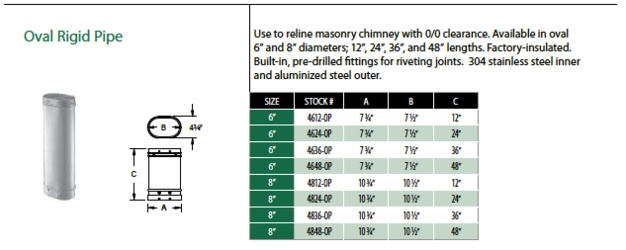Measure mark and cut very carefully after stretching the liner out.ok good to know; i'll have to find a supplier that has everything in stock.
So for the install the liner will be supported by the transition plate from the top and the tee will be suspended ~10ft above the bottom of the chimney. Is there a trick to installing the liner with the transition plate to class a pipe?
I'd like to avoid having to drop the entire assembly in, check fitment, pull out and recut the liner if required. A regular top plate would allow for the liner to be pulled up/down through the plate, but the transition plate forces you to terminate the liner on the bottom side. So getting the distance correct is important.
Do liners have some amount of expansion/compression they can withstand? I doubt the liner is going to go in completely straight even if I measure the distance and cut correctly.
Insulating a liner, why does the insulation need to be overlapped?
- Thread starter neverstop
- Start date
-
Active since 1995, Hearth.com is THE place on the internet for free information and advice about wood stoves, pellet stoves and other energy saving equipment.
We strive to provide opinions, articles, discussions and history related to Hearth Products and in a more general sense, energy issues.
We promote the EFFICIENT, RESPONSIBLE, CLEAN and SAFE use of all fuels, whether renewable or fossil.


